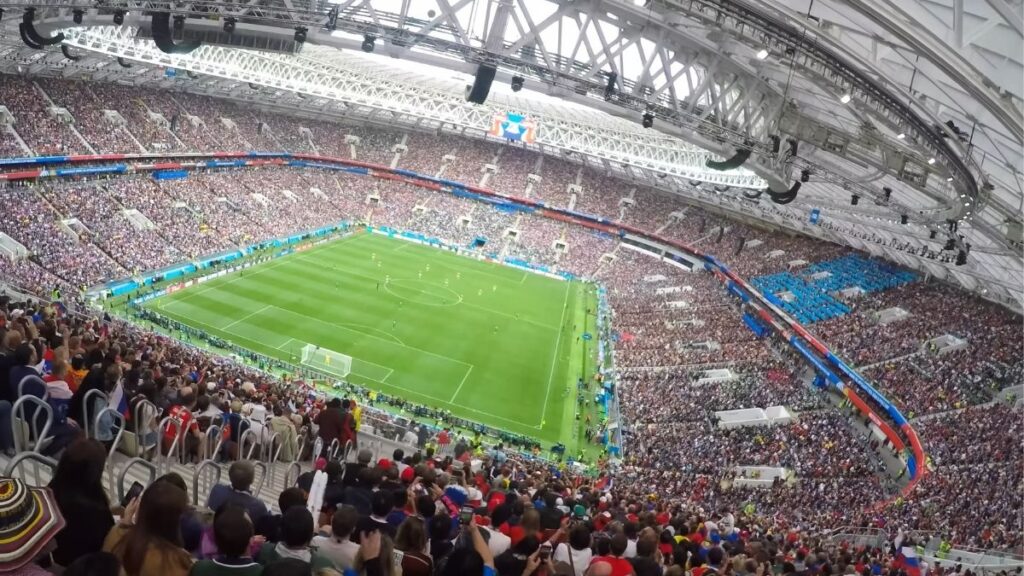Boost your betting experience and get up to $200 bonus right now!
As Liverpool gear up for a steamrolling run of fixtures through late September and October, squad depth won’t just be a buzzword—it will become the backbone of their survival and success. With a fierce pile-up of League Cup clashes and domestic battles, manager Arne Slot faces a juggling act of monumental proportions. This period isn’t merely about grinding points; it’s a brutal test of resilience, where rotation strategies have to be sharp, precise, and above all, effective. The Reds’ roster, enhanced by a blockbuster summer of signings like Florian Wirtz and Jeremie Frimpong, presents options both exciting and complex. Yet, with the departure of figures like Trent Alexander-Arnold and rumors swirling around others, can Liverpool’s revamped squad maintain the relentless energy and quality expected at Anfield? The ability to weave a rotation policy that keeps the squad fresh, injury-proof, and competitive could shape not just October but the entire campaign.

Analyzing Liverpool’s Squad Depth: The Goalkeepers and Defensive Lines Battle Fatigue During Critical Fixture Congestion
Amidst a workload rivalling the toughest European outfits, Liverpool’s defensive foundations emerge as a heartbeat to their campaign. The goalkeeping department sees Alisson Becker as an undisputed titan, guarding his territory with the calm of a seasoned warrior. Backup options like Armin Pecsi and Freddie Woodman bring reliability, but the real story is the recent exodus and arrivals. Caoimhin Kelleher’s move to Brentford and Vitezslav Jaros’s loan to Ajax reshaped the goalkeeper hierarchy, emphasizing quality over quantity. This is vital, considering the relentless pace of fixtures necessitates capable understudies who can step up without the squad faltering.
The right-back scenario laid to rest a chapter with Trent Alexander-Arnold’s move to Real Madrid, replaced effectively by Jeremie Frimpong. This has fueled competition with Conor Bradley and Calvin Ramsay for starting berths, pushing the defensive right line into a heated selection dilemma. With Ramsay’s limited appearances across loans, further moves might reshape this battle for position.
At the heart of defense, questions loom. Virgil van Dijk continues to set the tone, with Ibrahima Konate’s form holding the line — although rumors of his summer exit cloud the horizon. Joe Gomez remains vital; perhaps more so as Liverpool eyes Crystal Palace’s Marc Guehi, whose arrival could redefine the centre-back depth chart.
On the left, a surplus gives Slot healthy headaches: Andy Robertson still anchors the flank, while newcomer Milos Kerkez sprinkles promise, and Kostas Tsimikas faces an uncertain future. This depth in defense is key when managing minutes for players to avoid overload during a congested post-summer schedule. The defensive rotation list includes:
- Alisson Becker – First-choice goalkeeper, epitome of reliability
- Jeremie Frimpong – New signing, energizing right-back battles
- Virgil van Dijk – Defensive rock, undisputed starter
- Ibrahima Konate – Balances presence and contract speculation
- Andy Robertson – Veteran on the left flap, leadership in defense
- Milos Kerkez – Rising talent, supplementing fullback options
| Position | Player | Status | Rotation Importance |
|---|---|---|---|
| Goalkeeper | Alisson Becker | Starter | High (must stay fit) |
| Right-Back | Jeremie Frimpong | Competing starter | Medium (rotation vs. Bradley) |
| Center Back | Virgil van Dijk | Starter | High (key to defense) |
| Left-Back | Andy Robertson | Starter | High (leadership, consistency) |
How Defensive Rotation Influences Team Stability and Performance
The strategic rotation between defenders isn’t just about rest; it’s about maintaining defensive chemistry and minimizing risks during a period where fatigue could translate into costly lapses. Slot’s rotation needs to factor in:
- Matching player strengths against opponent styles
- Preventing injuries through calibrated workload
- Preserving leadership roles during key matches
- Incorporating younger players like Marc Guehi to inject fresh energy
This delicate balance draws parallels with how clubs like RB Leipzig have managed their squad during 2025, mixing youth and experience as analyzed on RKT Football. The Reds face a similar path, where defensive depth is being tested not only physically but tactically against the tempest of top-flight demands.
Midfield Magnates: Slot’s Engine Room and the Necessity of Fresh Legs
The midfield duo of Alexis Mac Allister and Ryan Gravenberch doesn’t just anchor Liverpool—they steer the battles in both defensive recovery and creative spark. Having amassed rave reviews for their relentless energy and incisive passing, they are the linchpins in Slot’s setup. However, their heavy lifting means rest is vital to maintain untouchable form.
Yet, Liverpool’s midfield isn’t just a two-man show. Curtis Jones, Wataru Endo, and Stefan Bajcetic hover as crucial rotation options. Bajcetic’s return from loan spells adds valuable depth, while Tyler Morton’s recent exploits for England Under-21s position him as a dark horse contender. Balancing these talents follows a formula that extends beyond just tactical tweaks—it’s about mindset, stamina, and seizing moments to shine on stages big and small.
| Midfielder | Role | Rotation Potential | Notable Strength |
|---|---|---|---|
| Alexis Mac Allister | Holding/Creative | Low (starter) | Passing range and control |
| Ryan Gravenberch | Box-to-box | Low (starter) | Dribbling and duel wins |
| Curtis Jones | Versatile | Medium | Energy and ticking clock for development |
| Stefan Bajcetic | Defensive Mid | Medium-High | Defensive solidarity |
This rotation strategy is essential not only for managing fatigue through the fixture pile-up but also for maintaining Liverpool’s trademark high-tempo play. In a conversation on Anfield Index, pundits David Lynch and Dave Davis emphasized this, noting: “Gravenberch and Mac Allister have been pivotal, but the League Cup offers the perfect platform for rotation to keep the squad hungry and fresh.”
- Maintain creative presence without overloading key starters
- Infuse younger talent to foster squad harmony and motivation
- Use rotation to adapt tactical formations at critical moments
Similar scenarios abound in global football, where rotation is no longer optional but strategic. Clubs across leagues like Ligue 1 are embracing this philosophy, balancing star power with emerging talents—a topic explored in detail at PSG rebuilding identity. Liverpool’s depth in midfield signals readiness but demands astute management.

The Attacking Puzzle: Rotation Decisions for Wingers and Strikers Amidst Intense Competitions
The attack line-up holds some of the hottest debates for Slot. While Mo Salah’s right wing remains inviolable, the left flank presents a compelling rivalry. Cody Gakpo and Luis Diaz vie for dominance, both boasting last season’s top scoring credentials. Meanwhile, the arrival of Florian Wirtz as a flashy No. 10 alongside Dominic Szoboszlai further spices tactical options, pushing Harvey Elliott down the pecking order despite his young promise.
Forward options are equally fluid. Darwin Nunez and Diogo Jota, though natural finishers, confess inconsistency and injury woes. Slot’s experiments with deploying Diaz centrally offer intriguing tactical versatility, but the ideal centre-forward profile might be coming via targets like Hugo Ekitike or Alexander Isak. This injection of fresh firepower could resolve ongoing debates about who leads the line effectively across competitions.
- Mo Salah – Unshakable right winger
- Cody Gakpo vs. Luis Diaz – Intense battle for left-wing starting role
- Florian Wirtz and Dominic Szoboszlai – Creative hubs for attacking midfield
- Darwin Nunez and Diogo Jota – Options for centre-forward with rotation needs
| Attacking Position | Player(s) | Rotation Notes | Key Attribute |
|---|---|---|---|
| Right Wing | Mo Salah | Minimal rotation | Goal scoring consistency |
| Left Wing | Cody Gakpo / Luis Diaz | Fierce competition for starts | Goal contribution & pace |
| Attacking Midfield (No. 10) | Florian Wirtz / Dominic Szoboszlai | Shared minutes | Creativity & vision |
| Centre-forward | Darwin Nunez / Diogo Jota | Rotation due to fitness issues | Finishing & movement |
Apart from pure tactical considerations, logistics related to fixtures such as overtime or traveling to deep European grounds make this rotation essential. Signs point to Slot eyeing a balanced approach: safeguarding stars during tough schedules while unleashing hungry, less-experienced players during cups, a theme also seen at Rangers’ European runs as detailed on Rangers European ambitions.
League Cup as Liverpool’s Rotation Laboratory: Managing Intensity Against West Ham and Beyond
When Liverpool line up against West Ham for the League Cup, it’s about more than just clinching progression or silverware; it’s an opportunity to test the limits of squad rotation. The match becomes a chessboard, where each substitution and lineup change is a strategic move against fixture congestion fatigue.
Experts like David Lynch and Dave Davis, during a recent Anfield Index discussion, highlighted this fixture as critical for resting stalwarts such as Ibrahima Konaté, who, while showing remarkable stamina playing three matches in a week, still benefits from cautious management.
Rotation here doesn’t mean weakened lineups; instead, it’s about presenting a competitive yet refreshed squad. Players like Curtis Jones may start to cement their roles, leveraging these opportunities to stake claims for more prominent roles in league battles. This mindset aligns with modern football’s tactical evolution, where cup games fuel player development and keep squad morale high.
- Resting key players to maintain peak Premier League form
- Gaining match sharpness for backup squad members
- Testing tactical variations under competitive conditions
- Fostering confidence and club cohesion across all squad levels
While West Ham remains a tough adversary capable of upsets, this approach gives Liverpool a significant edge in volume management, a concept explored in the broader topic of fixture pile-up in English football on RKT Football.

Tactical Flexibility and the Role of Sponsorship Partners in Liverpool’s Squad Management Fabric
Off the pitch, Liverpool’s relationship with sponsors such as Nike, Standard Chartered, AXA, and Carlsberg supports the club’s ambitions with resources and technological advancements that influence sports science, training equipment, and recovery processes. This infrastructure empowers Arne Slot’s extensive rotation plan by ensuring players have the best preparation possible.
For example, Nike’s latest kit innovations paired with JD Sports retail partnerships allow players to train with optimal gear enhancing performance and injury prevention. Meanwhile, AXA’s involvement extends into player health analytics, tailoring individualized recovery programs vital during September and October’s fixture pile-ups.
- Nike: Advanced kit and training equipment
- Standard Chartered: Financial backing & global branding
- AXA: Sports science and recovery technology
- Carlsberg: Global marketing and fan engagement
- EA Sports: Digital reach raising club profile worldwide
Additionally, partners like Expedia and Western Union facilitate logistics, particularly during travel for away fixtures, while Warrior Sports and New Balance have historically been associated with performance footwear, representing part of Liverpool’s holistic approach to athlete care. These collaborations form an unseen skeleton that supports the visible success on the pitch.
Understanding the club’s internal dynamics alongside the backing infrastructure showcases how tactical precision and squad depth strategies intertwine to keep Liverpool competitive across demanding schedules. It’s a model for modern football powerhouses aiming for glory on multiple fronts.
Join today and grab up to $200 bonus for your next bets!
Content assisted by AI. This article was created in whole or in part with the help of artificial intelligence.